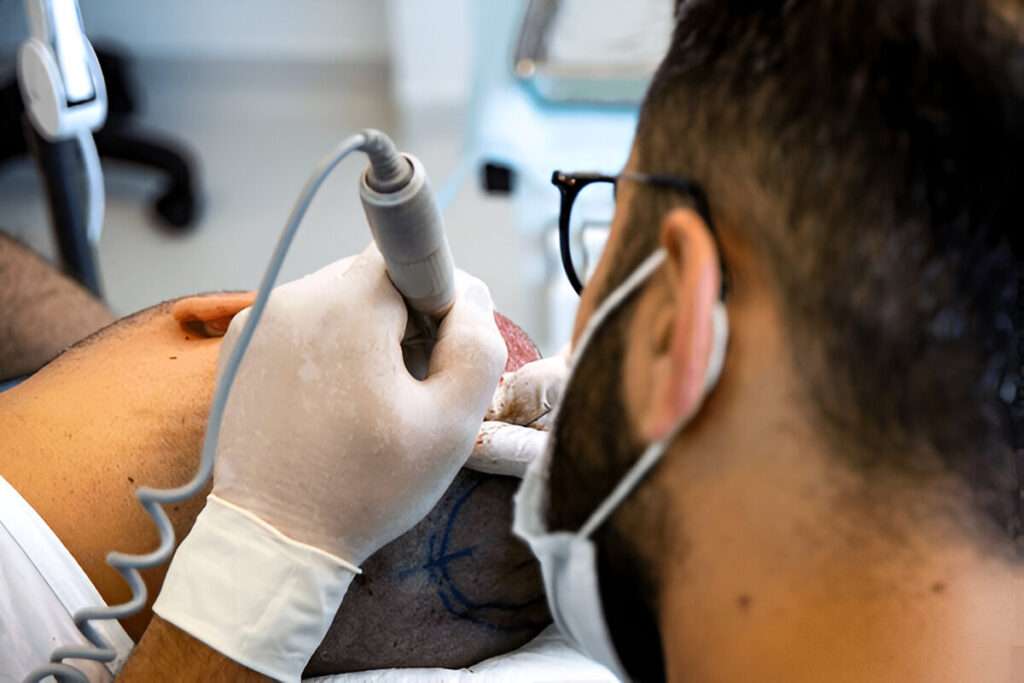Undergoing a hair transplant is an exciting step towards regaining confidence and a natural-looking hairline. However, the journey doesn’t end with the procedure itself. Proper post-operative care is essential to ensure the success of your hair transplant in London. Following the appropriate aftercare guidelines can avoid complications, promote healing, and enjoy optimal results. This guide will walk you through everything you need about post-operative care for hair transplants in the UK.
Understanding the Post-Operative Phase
After a hair transplant, your scalp will require time to heal. The first few days and weeks ensure the transplanted follicles settle into their new environment. Post-operative care involves physical healing and includes taking precautions to avoid damage to the newly implanted hair. Whether you’ve had a hair transplant in the UK or elsewhere, understanding the necessary steps will make the recovery process smoother.
The First 48 Hours: Immediate Aftercare
The first 48 hours after your hair transplant are critical. Your scalp may be swollen, red, or sensitive during this time. These reactions are common and part of the body’s natural healing process. You will likely be prescribed pain medications and antibiotics to prevent infection and manage discomfort.
In the initial phase, avoiding touching or scratching the transplanted area is essential, as this could disrupt the grafts. You must also avoid washing your hair during these first 48 hours. Most clinics recommend using a special shampoo and applying it gently after the first few days to help cleanse the scalp.
The First Week: Keeping Your Scalp Safe
The first week after a hair transplant is a period of adjustment. You’ll need to be extra careful with your scalp during this time. The newly transplanted follicles are still settling in, and any unnecessary trauma to the area could disrupt their growth.
During the first week, you will experience some shedding, which is perfectly normal. This is known as “shock loss,” where the transplanted hairs temporarily fall out before new hair begins to grow. While this can be disheartening, it’s a standard part of the process and is nothing to be concerned about.
Following your surgeon’s instructions regarding hair washing and scalp care is essential. Most hair transplant UK clinics advise washing your hair gently with lukewarm water, avoiding vigorous rubbing or scrubbing. Additionally, you should refrain from strenuous activities, such as exercise or lifting heavy weights, as sweating and physical stress could negatively impact your healing.
Weeks 2 to 4: The Healing Process
During the second to fourth weeks after your hair transplant, your scalp will begin to heal more rapidly. By this time, the swelling and redness should have mostly subsided. However, your hair follicles may still be in a delicate phase. You’ll want to continue being cautious when washing your hair.
The transplanted hair will likely shed at this stage, which is a natural process. This shedding phase might be unsettling, but remember it’s completely normal. The hair follicles are entering a dormant phase, and new hair growth will emerge in the coming months.
In terms of activity, you can slowly resume light exercise, but you should avoid intense physical activity until your surgeon gives you the go-ahead. The key during this time is to continue avoiding any trauma to the scalp.
Months 1 to 3: Early Hair Growth
Around the one-month mark, the real magic begins to happen. After the shedding phase, you will start noticing the first signs of new hair growth. However, remember that the hair will appear thin and may not match the expected volume. At this point, the newly growing hair will continue to develop and mature over time.
Your hair transplant is still settling in during these months, so be patient. Some patients may also notice slight scabbing or crusting around the transplanted hair follicles, which is normal. It’s crucial not to pick at these scabs, as doing so could cause the grafts to dislodge.
Continue following the aftercare instructions carefully. Don’t be tempted to use strong hair products that might irritate the scalp. Stick with mild, surgeon-approved shampoos and conditioners to maintain a clean and healthy environment for the growing follicles.
Months 3 to 6: Visible Results
You will notice more significant hair growth by the third to sixth month after your hair transplant in London. The hair will start filling in and become thicker as the follicles mature. You may feel more confident now, but remember it’s still a process. The hair may still be finer than your natural hair, but it will continue to grow and thicken over the following months.
During this stage, most patients can resume their normal activities without restriction. However, it’s essential to continue avoiding direct sun exposure or harsh environmental factors that could hinder the healing process.
Months 6 to 12: Full Results
In around six months, your hair will become fuller and more robust. This is when many patients begin to see more dramatic results. By the time the 12-month mark arrives, your hair transplant will have matured, and you’ll see the full extent of the results. Your hair will appear more natural, with better density and coverage.
At this stage, it’s essential to stay on top of your post-operative care. If you have any concerns or experience any issues, it’s best to contact your surgeon immediately. They’ll be able to assess the situation and ensure that everything is on track.
Long-Term Care: Maintaining Healthy Hair Growth
Once you’ve reached the one-year mark, your hair transplant is likely complete, but maintaining healthy hair growth is ongoing. You should continue practicing good hair care to keep your hair in its best condition. This includes regular washing with gentle products, protecting your scalp from the sun, and maintaining a healthy diet.
If you’ve had a hair transplant in the UK, you may also want to discuss the possibility of hair loss treatments or medications that can help maintain your results. Many patients choose to use topical solutions such as minoxidil or take oral medications to prevent further hair loss in the future.
Conclusion
Post-operative care is a vital part of the hair transplant process. By following your surgeon’s instructions and being patient throughout the recovery phases, you can ensure that your transplant heals properly and delivers the best possible results. A hair transplant in London can be life-changing, and with the proper care, the investment will pay off in fuller, healthier hair that lasts for years to come.
More articles: Looking for a Skilled Dentist in Des Plaines? Here’s What You Need to Know






